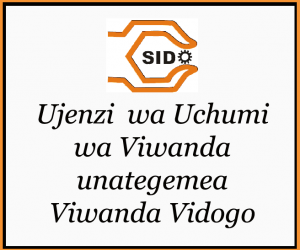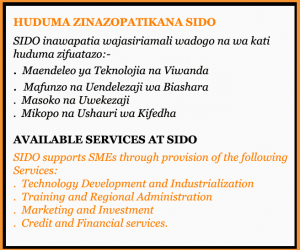RUVUMA REGION SOCIO-ECONOMIC PROFILE
LOCATION
Ruvuma region is one of Tanzania's 30 administrative regions. The region is located in the southwestern part of Tanzania between latitude 9-12 degrees and longitudes 34-39. It is the sixth largest region of Tanzania and covers an area of 63,498 square kilometer of which about 5% is cultivated. The region is named after the Ruvuma River which forms most of its southern boundary with Portuguese-speaking Mozambique( where it is known as Rovuma). The region is also bordered to the north by the Morogoro Region, to the northeast by the Lindi Region, to the east by the Mtwara Region and to the northwest by the Iringa Region. The regional capital is the municipality of Songea.
POPULATION AND ADMINISTRATIVE UNITS
According to the 2012 national population census the region had a population of 1,376,891 which was lower than the pre-census projection of 1,449,830. For 2002-2012 the region's 2.1 percent average annual population growth rate was the twentieth highest in the country. It was also the 28th most densely populated region with 22 people per square kilometer.
The region is administratively divided into five districts namely Mbinga, Namtumbo, Nyasa, Songea and Tunduru. According to the 2012 national census Mbinga had a population of 353,683, Namtumbo had a population of 201,639, Nyasa had a population of 146,160, Songea had a population of 377,130 and Tunduru had a population of 298,279.
CLIMATE
Ruvuma region has a mid temperature averaging 23C depending on altitude and season. The month of June, July and August are chilly with the temperature dropping to 13C particulary, with in the area surrounding Matengo Highlands in Mbinga district, October and November and hottest months with an average temperature of 30C.
The region experience adequate rainfall annually except for bad years. The rainfall pattern depicts one long season which begins in November and ends in May each year. The rainfall average between 800mm and 1800mm.The quantity of rain varies from one district to another with Mbinga district recording the highest annual average of 1,225 mm, while Tunduru district gets the lowest rainfall which is normally less than 900 mm per annum.
Vegetation consists of woodland, bushland thicket and grasslands. The common vegetation in the arable land comprises planted trees, bamboos and shrubs. Miombo woodlands cover greater part of the region which includes some parts of Songea Rural district, Tunduru and Mbinga. Area surrounding Mount Matogoro are covered by planted pines and cucalyptus trees.
ETHNIC GROUPS
The main ethnic groups in Ruvuma region are Wamatengo, Wangoni, Wayao, Wanyasa, Wandendeule, Wamakua, Wapoto, Wamanda, Wanindi, Wamatambwe and Wabena.
Traditionally, the regional population is dominated by Wangoni, Wamatengo and Wayao who are basically cultivators. Subsistence crop cultivation is widely practised. Unlike most regions in the country, Livestock keeping is not a common economic activity among various ethnic groups in the region
THE REGION ECONOMY
Ruvuma Region is mainly an agrarian region with over 87 percent of its population residing in rural areas and actively engaged in land based production. The regional major economic activities are agricultural, farming, Livestock keeping, lumbering, fishing, beekeeping, mining and trade.


